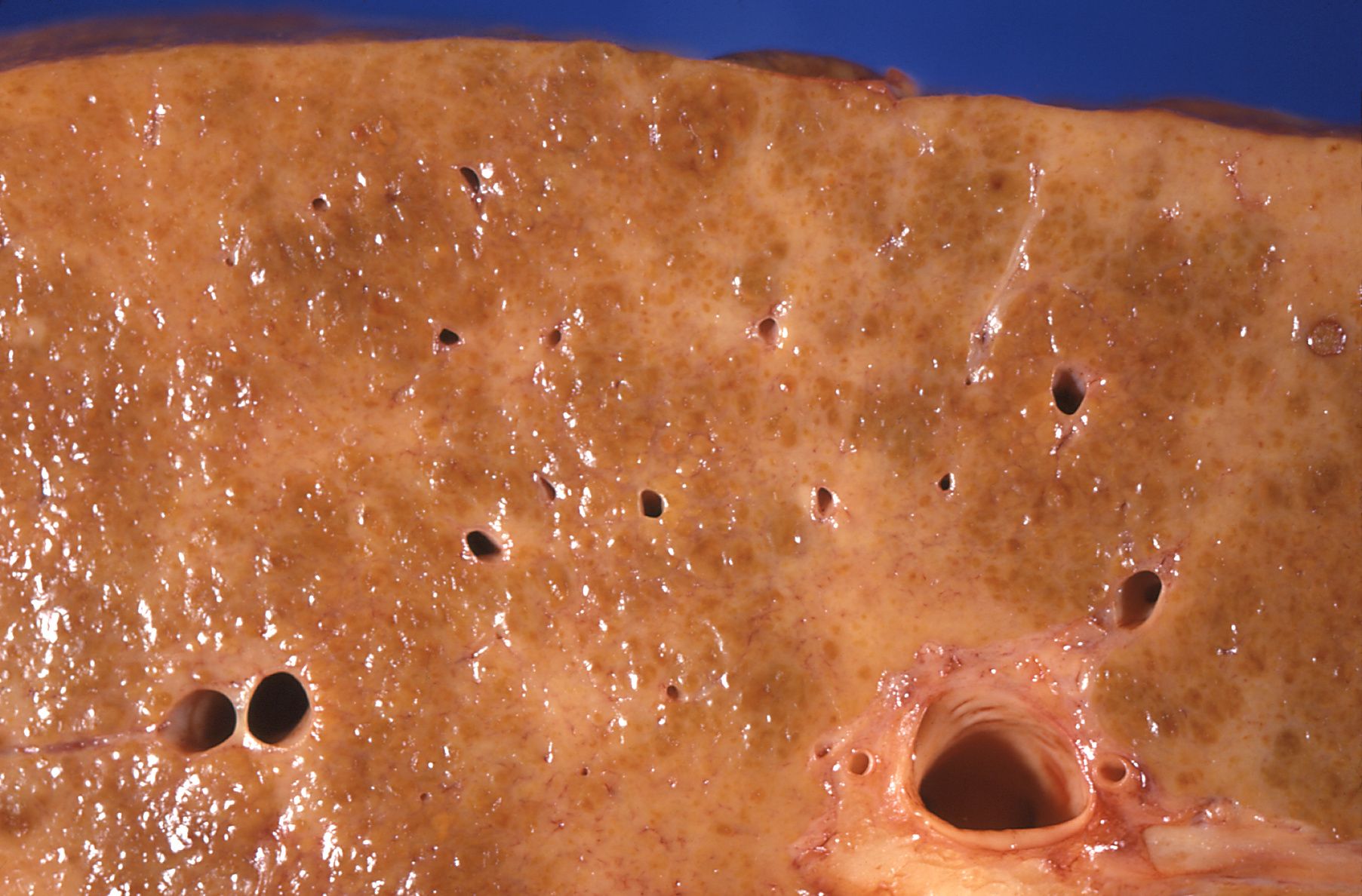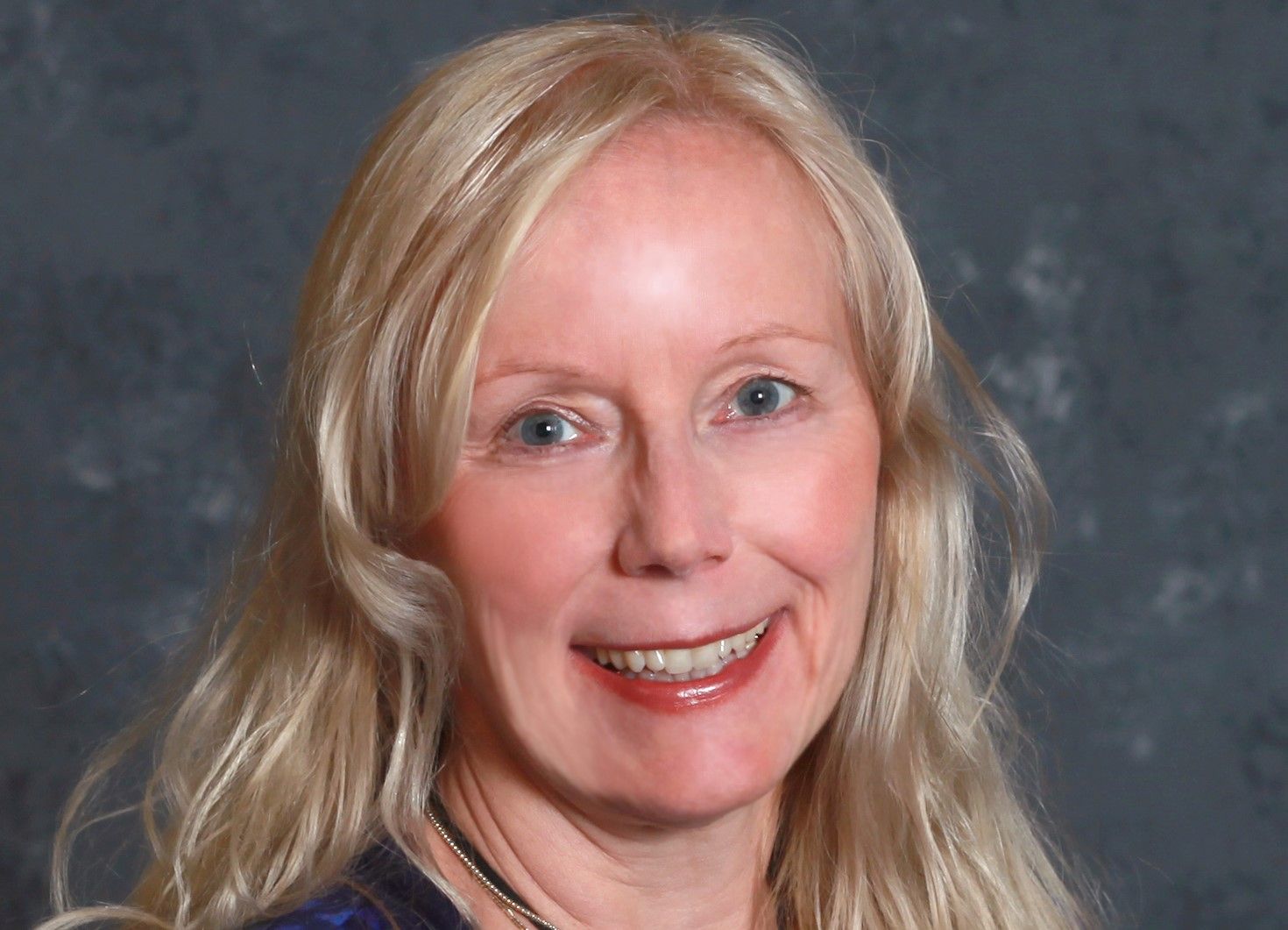South Dakota ranks second in the nation for the rate at which its residents die of liver diseases, and the fatality rate is rising overall with many experts now blaming poor lifestyle and eating habits in addition to heavy alcohol use as causes of the illnesses.
While heavy alcohol consumption remains a major cause of deaths due to liver ailments, doctors are also seeing more liver disease caused by diabetes, obesity and the viral infection Hepatitis C or a combination of all four. Data show that liver disease is also striking at a younger age than in the past, with a particularly high death rate among people 30 to 39 years of age.
Popular perception places the blame for liver disease on alcohol abuse, but a deeper look shows the causes are more broad than that. In fact, the most common chronic liver ailment in the U.S. is a disease called non-alcoholic fatty liver disease, which can be related to diabetes or obesity. Experts estimate that around 30 percent of Americans — roughly 100 million people — have non-alcoholic fatty liver disease. About 3 to 5 million people might develop cirrhosis from the condition, said Dr. Adnan Said, program director of transplant hepatology at the University of Wisconsin School of Medicine. Said also is a member of the National Medical Advisory Committee for the American Liver Foundation.
“Population-wise, I think fortunately, or unfortunately, a lot of liver disease can be affected by our life choices,” Said said.
According to the federal Centers for Disease Control and Prevention, South Dakota’s death rate due to liver disease was about 17.5 deaths per 100,000 people in 2017, the last year for which data is available. Only New Mexico’s liver disease death rate was higher at 26.8 per 100,000.
For people between the ages of 30 and 39, liver disease was the third-leading cause of death in South Dakota from 2013 to 2017, following only accidents and intentional self-harm. For people age 40 to 59, liver disease was the fourth-leading cause of death behind cancer, heart disease and accidents. Chronic liver diseases and cirrhosis are the state’s 10th overall leading cause of death; the average age of death from liver disease in South Dakota is 55.
The rate of liver disease deaths is generally trending upward in South Dakota. In 2009, the state’s liver disease death rate was 9.7 per 100,000 people. The rate grew every year until 2017 when it fell from 2016’s rate of 18.3 to 17.5. The number of deaths in South Dakota due to liver ailments in 2017 was 153; from 2013 to 2017, 696 people died.

Chronic alcohol abuse remains the leading cause of fatal liver diseases. But South Dakotans may be affected more by other factors.
South Dakotans binge drink more than the rest of the country, according to the CDC. Binge drinking is classified as men having more than five drinks or women having more than four drinks at a time.
But according to the CDC’s Behavioral Risk Factors Surveillance System, a phone survey in which adults self-report their behaviors, South Dakota residents are less likely to be heavy drinkers than those in the rest of the country. The CDC classifies heavy drinking as consuming eight drinks per week for women or 15 drinks a week for men.
The viral infection Hepatitis C is also a growing concern for the medical community when it comes to combatting liver illnesses.
An estimated 3 million to 5 million Americans have Hepatitis C, but because it can take decades before symptoms to show up, as many as 75 percent of infected people don’t know they are sick, increasing the chance of spreading the disease from person to person.
Baby Boomers are at the highest risk for the disease, though often through no fault of their own. The Hepatitis C virus wasn’t well screened for or understood prior to 1992. People who got blood transfusions, organ transplants or tattoos or used unclean needles for injections could unknowingly have been exposed to the disease.
The disease also is having a disproportionate effect on Native Americans, who make up about 30 percent of the state’s Hepatitis C cases but only about 15 percent of the state population.
There is also a growing number of younger people contracting Hepatitis C in South Dakota. The average age of someone diagnosed with Hepatitis C in the state is 44. Causes for the rising infection rate among younger people isn’t well understood, said South Dakota Epidemiologist Joshua Clayton.
Doctors are also concerned about diet and alcohol and how poor lifestyle choices are causing liver ailments at younger ages.
“I have seen in South Dakota some of the youngest cirrhotics I have seen in my career,” said Dr. Christine Pocha, a transplant hepatologist, or liver specialist, at Avera McKennan Hospital in Sioux Falls.

Almost any food or beverage consumed will have an effect on liver health. A main function of the liver is to clean the bloodstream of toxins. The liver also is the first stop most nutrients make before heading off to other parts of the body. When someone spends a lifetime eating a diet overly heavy in processed sugar, bread and trans fats, the liver eventually gets a little sick. The condition is called non-alcoholic fatty liver disease.
The American Liver Foundation estimates nearly one-third of Americans, about 100 million people, have at least some level of non-alcoholic fatty liver disease. Very few people will actually develop liver failure due to that disease alone, but it can and does make other diseases of the liver worse. When combined with too much alcohol and not enough exercise, fatty liver disease can be deadly. It also makes people with Hepatitis C more likely to develop cirrhosis.
“We spend most of our time teaching patients about lifestyle,” said Dr. Ali Al-Hajjaj, a transplant hepatologist with Avera Health in Sioux Falls.
Healthy food habits such as eating more fruits, vegetables and legumes while cutting down on salt, sugar and alcohol, Al-Hajjaj said, can go a long way toward staving off liver diseases. Trying to get at least 60 minutes of exercise a day is essential too, he said.
If all that sounds familiar, it’s because eating a better diet and getting exercise is part of the chronic disease reduction gospel. A healthy diet and exercise can help prevent everything from heart disease to diabetes. Doctors have been preaching it for decades, and Avera liver doctors are no different.
“Like all patients, some listen, some don’t,” said Dr. Jeffery Steers, a liver and kidney and transplant surgeon working for Avera McKennan Hospital in Sioux Falls.
A big part of the problem, Al-Hajjaj said, is that high-sugar, high-calorie processed foods often are much easier to find and tend to be cheaper than more nutritious options. South Dakota’s rural nature means there are significant portions of the state’s population who have to drive long distances to get to a full-service grocery store.
“It’s easier to find a chocolate bar and a beer than it is to find a good meal,” Al-Hajjaj said.
Said, of the liver foundation, made much the same point. Areas defined as “food deserts” — areas that don’t have ready access to a full-service grocery store or similar service — also tend to have sicker populations. Those deserts tend to be located in areas whose populations have lower median incomes or are dispersed over a wide area.

"It’s easier to find a chocolate bar and a beer than it is to find a good meal." – Dr. Ali Al-Hajjaj, transplant hepatologist with Avera Health in Sioux Falls
Alcohol use higher among affluent
Alcohol has long been known to cause liver damage. Exactly how and why the damage occurs isn’t well understood. Genetic differences play a role as does diet, according to the National Institute on Alcohol Abuse and Alcoholism.
South Dakota, according to a 2018 report from the institute, was 10th in the nation in terms of alcohol consumed per capita. Still, state residents reported a slightly lower rate of heavy drinking on average than the rest of the country. North Dakota residents drank the most, according to the study.
Data gathered by the South Dakota Department of Health shows the poorest of the state’s citizens actually drink less often than the more well off. About 47 percent of those whose household income is less than $35,000 a year reported being regular drinkers, which means they consumed alcohol within 30 days of being surveyed. The number climbs to 74 percent for people whose yearly household income is $75,000 or more.
It should be no surprise, then, that college-educated people who tend to have higher incomes also tend to drink more often than those who don’t have a degree and make less. Many indicators of financial stability also seem to point to more regular drinking, including being married and owning a home.
Nearly 60 percent of white people surveyed reported having a drink in the last 30 days. In the Native American community, only 40 percent of respondents reported drinking in the past month. About 47 percent of hispanic people, meanwhile, said they drank in the last 30 days.
The DOH data shows 13 percent of women and 24 percent of men reported binge drinking at some point. Meanwhile, 6 percent of men and 5 percent of women reported drinking heavily.
About 19 percent of people making $35,000 a year or less said they had binged on alcohol in the last 30 days, but about 22 percent of people making $75,000 or more per year reported binge drinking.
The number of steady heavy drinkers in the population doesn’t vary much by income, race or even employment status. With a few exceptions, notably those who are unemployed, between 5 and 6 percent of the population reports being regular heavy drinkers.
Convincing more people to cut back on their drinking, Hajjaj said, could go a long way toward reducing the number of deaths, early or otherwise, from liver disease.

Liver viruses also a concern
There are three well-known types of viral hepatitis, all of which affect the liver. Two of them, Hepatitis A and Hepatitis B, have been very well controlled in the U.S. through vaccinations. Both are part of the regular recommended course for children in the U.S.
Hepatitis C is a greater concern. The blood-borne disease doesn’t have a vaccine. About 30 percent of people infected with the disease are likely to develop liver damage and up to six percent may develop liver failure. There also is a worry that because decades can pass before any symptoms become readily apparent, someone who is infected can spread the disease further without knowing it.
The disease can be spread through contact with an infected person’s blood. Transmission can happen through such activities as injection drug use, accidental needle stick or sexual contact.
Hepatitis C is not well tracked because most states do not have a good Hepatitis C surveillance program in place, said Clayton, state epidemiologist.
“The CDC is just now getting its hands around helping states build better programs,” Clayton said.
About 75 percent of Americans infected with Hepatitis C are Baby Boomers, those born between 1946 and 1964. The CDC estimates that about 3 percent of all Baby Boomers have the disease, which is a significantly higher percentage than any other age group.
But there’s a growing number of Hepatitis C cases being found in younger adults. The average age of people infected with Hepatitis C in South Dakota is 44. The disease also is having a disproportionate effect on the state’s Native American population. The average age of a Native American diagnosed with Hepatitis C is 39, compared to 49 in the state’s non-Native population.
As a potentially lethal infectious disease, Hepatitis C is on the list of illnesses that must be reported to the state Department of Health. Because of that, Clayton said, the state has a good idea of where infections are taking place. The top counties for infection generally correspond to where Indian reservations are located.
Once someone is diagnosed, one of the state’s 22 infectious disease specialists tries with varying success to interview them about things that may have led them to contract the disease.
“There’s a lot of risk factor information we don’t have,” Clayton said. “What’s the major driver for people under 40? If we have that, we can figure out how to intervene.”
While prevention is the best option, the disease can be cured. Over the last 10 years or so, a group of medications called “direct acting antivirals” has been developed. Those drugs can cure up to 95 percent of Hepatitis C infections.
The new drugs are so effective that some hospitals are using organs from Hepatitis C-positive organ donors for transplants, said Steers, the liver and kidney and transplant surgeon.
A full six- to eight-week course of Hepatitis C medications can cost anywhere from $26,000 to $90,000 if purchased directly from the manufacturer. Health insurance companies usually negotiate for lower drug prices but tend to keep that information secret. There also are several patient assistance programs that help lower the price a patient pays for the drugs.
The high price tag for the drug means Medicaid patients in South Dakota face restrictions before they can get approved for the drugs. The state’s Medicaid program requires patients to have a biopsy showing significant liver damage and proof that they’re sober before they can be approved for the drugs. Those restrictions have earned the state’s Medicaid program a failing grade for patient access to the drugs from the National Viral Hepatitis Roundtable, a group that advocates for hepatitis prevention and treatment.

Access to health care limits treatment
Access to proper medical care can affect the treatment of liver disease regardless of the cause.
Many South Dakotans live far from a hospital with a full slate of specialty care. Pierre, the state’s capital city, for example, didn’t have a cancer treatment center until 2018. Many rural hospitals offer primary care, an emergency room and not much else.
For specialty care such as hepatology, patients have to travel either to Sioux Falls or Rapid City. If a patient’s liver fails and they need a new one, Sioux Falls is the only option.
“Unfortunately, I don’t see a way for many patients to get care aside from having to travel for it,” Steers said.
In small towns, a lack of patients reduces the ability of providers to offer liver disease treatments. Advances in telehealth or online care have helped expand treatment options, Said said.
The Veteran’s Administration and Avera Health are providing those types of care remotely in South Dakota, but it can’t replace in-person medical visits. “We can’t replicate advanced equipment and training in (rural) settings,” Steers said.
What can help all liver disease patients, whether they’ve got Hep-C, fatty liver disease or any other liver affliction, is early detection, said Pocha. Screening for abnormal levels of Alanine Aminotransferase, or ALT, can catch most liver diseases. It’s a fairly simple blood test that can be done in most hospitals.
“It all starts with the family physician,” Al-Hajajj said.
Once a patient and their doctor know there’s an issue, they can be referred to a hepatologist for a deeper look at what’s going on. Al-Hajjaj said the team at Avera McKennan Hospital can usually accommodate someone within a week. If caught early enough and with proper treatment, significant liver damage can be avoided.
South Dakota’s rate of liver disease deaths has been on the rise for at least the last 10 years, DOH data show. It’s becoming a bigger issue nationally too.
“If anything, the numbers may be worse than they appear,” Steers said.
Because the liver affects so much and is affected by so much, a lot of deaths due to liver illnesses are not reported accurately, Steers said. He said a lot of times someone can go into the hospital with liver disease and but will die ultimately of acute respiratory failure, which is what gets listed on the death certificate.
Research from the CDC has also found that deaths caused by liver disease driven by Hepatitis C are under-reported. More effort, both Al-Hajjaj and Pocha said, needs to be put into making people more aware of their liver and what the consequences can be.
“I think people need to understand that the liver is just as important as the heart,” Pocha said.
Steers said there is no machine that can make up for a failing liver, once it goes, it goes and, “if you’re not a good candidate for a transplant, It’s a slow and painful death.”
Where to get free testing for Hepatitis C in SD
Aberdeen
402 S. Main St.
Toll free: 1-866-805-1007
Pierre
740 E. Sioux, Suite 107
Toll free: 1-866-229-4927
Rapid City
909 E. St. Patrick, Suite 10
605-394-5298
Toll free: 1-866-474-8221
Sioux Falls
2001 East 8th St.
Toll free: 1-866-315-9214
Watertown
2001 9th Ave. SW #500
Toll free: 1-866-817-4090




